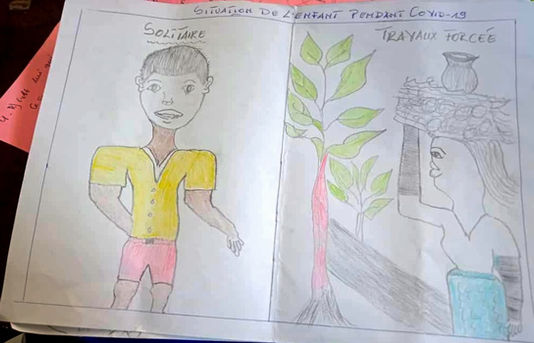
Researching the Impact of School Closures on Children in Humanitarian Settings: A Multi-Country Study
UNICEF/Volpe
Participatory Research in Three Countries: Colombia, Democratic Republic of the Congo, and Lebanon
This is a collaborative research project led by Proteknôn, on behalf of the Alliance, in partnership with the INEE. National implementing partners include BIFERD (DRC), CINDE (Colombia), and Dr. Bassel Akar (Lebanon). The project is generously funded by Porticus and UNICEF.
Phase 1: Secondary research and planning (2020)
Phase 2: Primary research, analysis, dissemination, and advocacy (2021-July 2022)
Phase 3: Global round tables (Fall 2022-March 2023)
Goal: To better ensure that children are at the centre of planning processes during infectious disease outbreaks.
Key Research Questions: In humanitarian and crisis contexts, how have school closures during the COVID-19 pandemic affected:
-
education inequalities?
-
child protection risk and protective factors?
-
adverse outcomes for children?
The research methods are qualitative and participatory to ensure that the findings are informed by the experiences and perspectives of children, their families, educators, and the social service workforce. They include: key informant interviews (global and national); workshops with children; focus groups with caregivers, educators, and members of the social service workforce; and semi-structured interviews with children.
The methodology is inclusive and rights based:
-
active inclusion of voices of those at the margins of society
-
gendered, intergeneration, child rights-based analysis
-
target of15% of research sample to be children/adults with range of disabilities
Research participants include:
-
Global and national key informants: 46
-
Children: 292
-
Parents: 105
-
Education and protection stakeholders: 178

Art Gallery and Research Outputs by Children and Young People
Throughout this research project, we captured children's experiences and perspectives through the use of art!
Explore each gallery below by clicking on the arrow on the right-hand side of the photo or by clicking on the photo itself to expand the gallery to entre full-screen and see the description in full.
Lebanon
Democratic Republic of the Congo (DRC)
Colombia
Colombia and Nicaragua
Timeline of School Closures
Source: UNESCO's global monitoring of school closures due to COVID-19, Updated on 17 June 2021
Special thanks to Thu Truong and UNESCO for providing the above Timeline of School Closures, to find out more about UNESCO's global monitoring of school closures, click here.
Academic Break: Schools across the country are on scheduled academic breaks for most or all the student population. All instructional activities are suspended during this period.
Fully Open: Schools are open and deliver classes exclusively face-to-face for most or all of the student population.
Partially Open: Schools are: (a) open in certain regions and closed in others; and/or (b) open for some grades, levels, or age groups and closed for others; and/or (c) open with reduced in-person class time, combined with distance learning (hybrid approach).
Closed due to COVID-19: Government-mandated closures of educational institutions affecting most or all of the student population.

















